
Discover The World Of Daisies: Types, Care Tips & More For Your Garden
Published: 12/06/2024 | Updated: 12/06/2024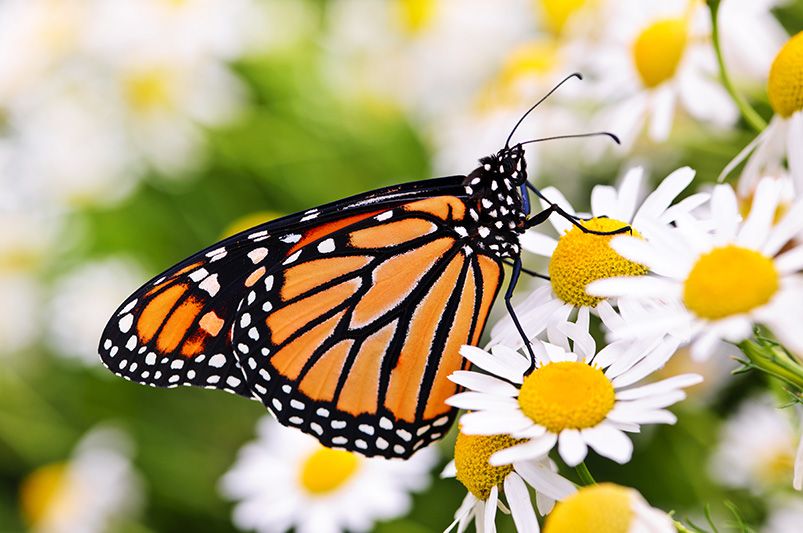
The daisy flower is the quintessential flower, from the delicate English daisy with its bright yellow centres or other species of lawn daisy or gloriosa daisies with their bright yellow petals, blue flowers, vivid white petals, and long green stems, or the charming blue-eyed daisies that add a touch of zen to any yard, there is a daisy for everyone. They are also the easiest to draw and the perfect flower to weave into chains, adding the most happiness to a lovely bouquet of wildflowers.


Even though these low-maintenance plants can survive with very little care—and occasionally even flourish too well on their own, spreading throughout your lawn and garden to unexpected places—you can still enjoy their cheery blooms throughout the year with the right kind of sunlight, the right amount of water, and a meticulous care and maintenance schedule.
Asters, chrysanthemums, marigolds, and zinnias are among the more than 20,000 species of plants that belong to the Asteraceae family, which includes daisies. Although other members of this 180-species group of perennials, such as gerbera daisies, painted daisies, and marguerite daisies, display brighter and more colourful combinations, the most famous daisy blossom has a yellow centre with white, ray-shaped petals surrounding it.
These pretty flowers are especially well-known for their composite heads, which incorporate both disc and ray blooms. The yellow centre, composed of several disc blooms, is surrounded by ray flowers.
The forty species of daisies in the Leucanthemum genus include some of the most well-known and well-loved varieties, such as English daisies (also known as bellis perennis), shasta daisies, and ox-eye daisies. Similar in appearance to their summer-blooming cousins, Nippon daisies, sometimes known as Montauk daisies, belong to the Nipponanthemum family and are noted for blooming late in the summer and into the first frost.
Taking Care of Daisies
The daisy family is generally low-maintenance and simple to take care of. Many daisies originated on the prairie, where they were able to withstand hot, dry summers with full sun and chilly, rainy winters. They don't require a great deal.
Sunlight
For the greatest flowers, plant daisies in an area that receives six hours or more of direct sunlight per day. Certain varieties will bloom in partial shade, but sporadically.
Soil Conditions
According to specialists, daisy family members dislike having wet roots; therefore, choose well-drained soil that will allow the roots to completely dry between waterings.
Watering Needs
Daisy plants that receive too much water may wilt or have yellowish leaves. During the growing season, experts advise giving daisies 1 to 2 inches of water at the base of the plant every week; in the winter, they advise reducing this to every other week. Daisies are traditionally good at telling you they need water so just water them when they appear wilted.
Fertilizer
While some advise mulching your daisies with a mixture of organic materials that release nutrients into the soil as it decomposes, others advise giving your daisies a monthly dose of a balanced fertilizer.
Planting
Several types of daisies grow quickly from seed, ready to be planted in the spring and display their fully developed blooms in the late summer. Garden centres also provide a good selection of daisies all season long. Prepare the plant for winter if you plant from division or cuttings in the autumn. For protection against freezing and thawing during the winter and to mitigate soil temperatures, mulch around the roots.
Pruning
While they shouldn't be severely pruned, daisies should be deadheaded to promote additional blooms. Weak-stemmed daisies can be trimmed back in the autumn, but sturdy kinds can stay in the garden until spring to add winter charm. To manage the daisies' size and general appearance, you can also cut them. Daisies can withstand a good pinching for shaping, and they grow extremely quickly.
How to Grow Your Daisies
Daisy cuttings let you share or extend their cheery hue to another area of your garden. We advise waiting until the flowers have done blooming if you notice flower buds (this usually happens in July). Remove the blossoms by cutting them back to the crown, then move or split them. if you plan on dividing the plant after three growth seasons, you can even wait until autumn to do so.
Potting and Repotting
If you decide to cultivate your daisies in pots, try moving them to a larger pot once the roots reach the sides. You probably should have repotted it already if they are coming out of the bottom. You want to increase the size of the pot by 1 to 2 inches every 18 months rather than switching to a large pot too quickly. Most daisies prefer a slightly smaller pot than a larger pot. Just before putting the plant back outside in the spring, move it.
Pests and Diseases
When grown properly, daisies don't often cause issues, however, some garden insects, deer, and rabbits might be tempted to nibble on them. Fungal leaf spots such as Alternaria or Septoria, which can be treated with fungicide, can be caused by excessive wetness.
Your plant may also be targeted by powdery mildew. Powdery mildew is caused by high humidity, heat, poor air circulation, and insufficient sun exposure for that particular plant. Use a fungicide solution containing sulphur or myclobutanil to treat the illness.
So other than the odd deer nibble or overgrown daisy pot, these delightful blooms are pretty low maintenance and they add instant charm to any outdoor space.
Are you ready to give your yard some daisy cheer? Consider adding some of these stunning daisy species to your yard.
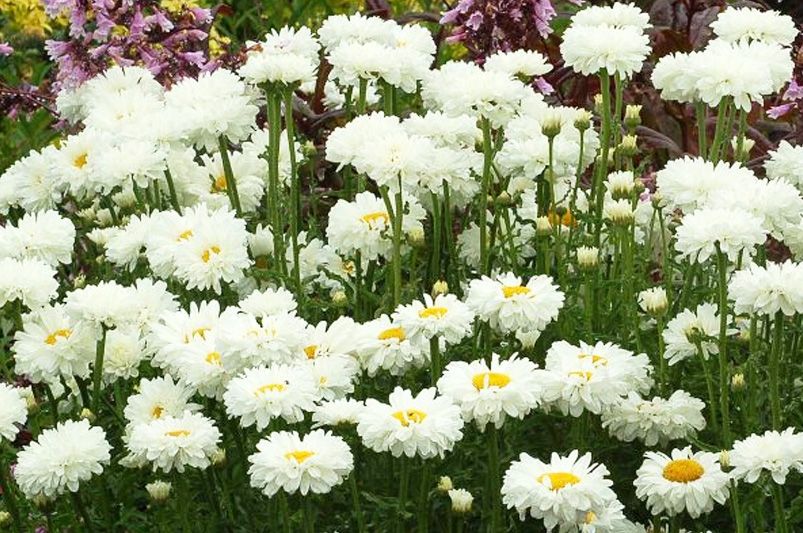
Victorian Secret Shasta Daisy
Victorian Secret Shasta Daisy (Leucanthemum x superbum 'Victorina Secret') is a beautiful plant with antique white petals that will provide classic colour and structure to your environment! A striking yellow centre draws attention to the ruffled appearance of the long and short petals! With their double covering of ivory petals that are ruffled and shaggy, the blooms resemble large landing pads for pollinators such as butterflies.
The most stunning double blooms that not only stay a long time in the garden but also the vase are featured on a tidy, compact form! The gorgeous bright blossoms will give bouquets and flower arrangements a "glow-up"! Even dry, they create beautiful flowers!
Victorian Secret Shasta Daisy is tolerant, low maintenance, quick to grow, and compact, adding vintage elegance to any contemporary environment! Deer and rabbits tend to avoid these magnificent herbaceous perennials unless they are in a desperate situation because they are hardy in both cold and heat across USDA growth zones 5 to 9.
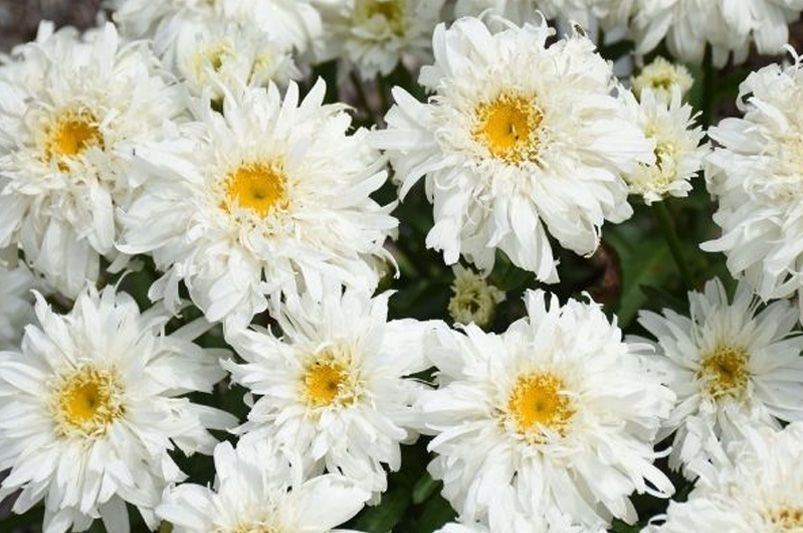
Marshmallow Shasta Daisy
With a puffy appearance similar to the candy. Big, dazzling white, totally double, 3½" blooms completely cover the medium-sized habit. The minimal vernalization requirements—4-6 weeks is our recommendation for optimal performance, though we have seen flowering without vernalization—will delight growers.
All-time favorites for the perennial border, provided they are consistently deadheaded, the cheerful blossoms can last for several months after they first appear in the early summer. Marshmallow Shastas blend in so well with other perennials that they should be in every garden!
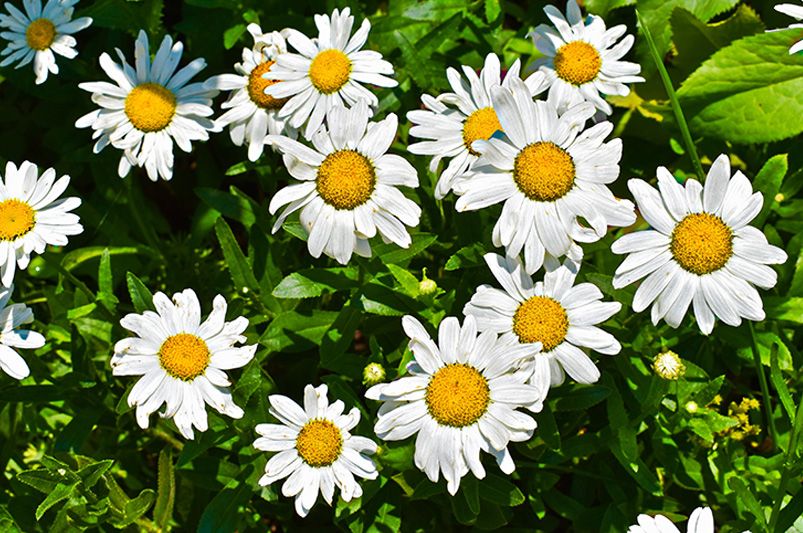
Alaska Shasta Daisy
Alaska Shasta Daisy seeds provide pure, shimmering white, perpetual blossoms.
Their vibrant colour and long-lasting blossoms give your outside area a season-long, cheery appearance.
These white daisies have a gorgeous, buttery yellow centre and are about four to five inches around. Each plant emerges from a tidy, dark green bush with dozens of tall, robust stems. Alaska Shasta Daisy seeds open for flowering the next season. They are a striking addition to any landscape because of their timeless appearance and delicate foliage!
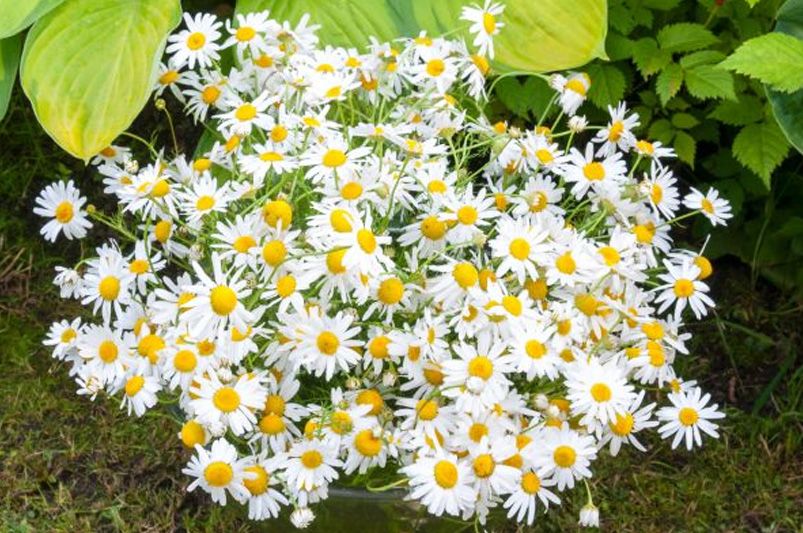
Banana Cream Shasta Daisy
The enhanced model of Amazing Daisies, known as Banana Cream II," is the most pleasant cheerful little daisy you'll see in the garden and it has all the qualities you've come to enjoy. 'Banana Cream II,' now more floriferous, blooms sooner and retains its buttery yellow bloom colour longer. The lush, brilliant green foliage, which is between 20 and 24 inches tall and broad, provides the ideal background for the fully blossomed flowers. Planting this reblooming Shasta Daisy in full sun is recommended as it is hardy in zones 5–9. Perennial daisies are easy to plant and add colour to any area.
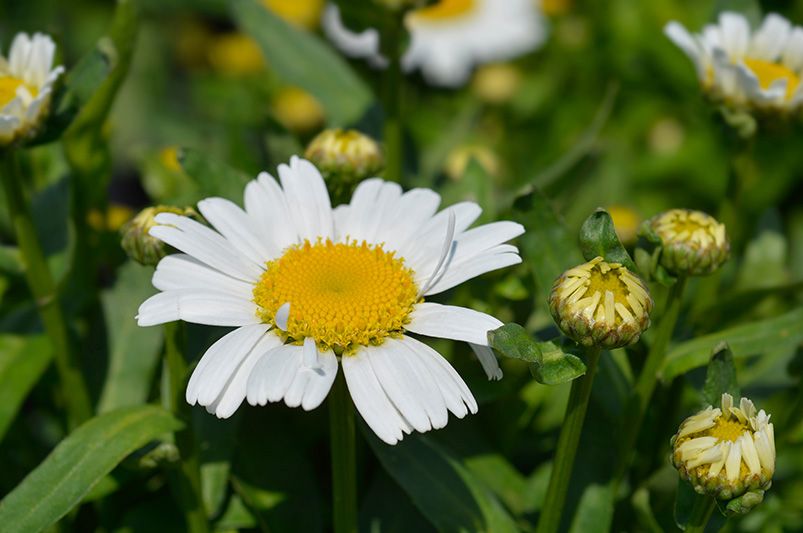
Snow Lady Shasta Daisy
Every year, photographers swarm to daisy fields in hopes of capturing the ideal shot of these flawlessly white petals. Plant a few Snow Lady Shasta Daisy (Leucanthemum 'Snow Lady') in your backyard to avoid the frenzied rush! This lovely perennial blooms an abundance of snow-white flowers, giving the impression that it's Christmas in July. For the traditional Daisy look, the petals encircle a buttery yellow centre.
Having cut flowers nearby at all times is another method to keep them close. If you can get the blossoms to stay on their robust stems, you will be rewarded with an impressive sight. The vivid yellow and white provide a striking contrast with the lush green leaves. The vivid yellow and white provide a striking contrast with the lush green leaves. Choose a few stems to add some colour to your dining room or living room table by arranging them in a bouquet.
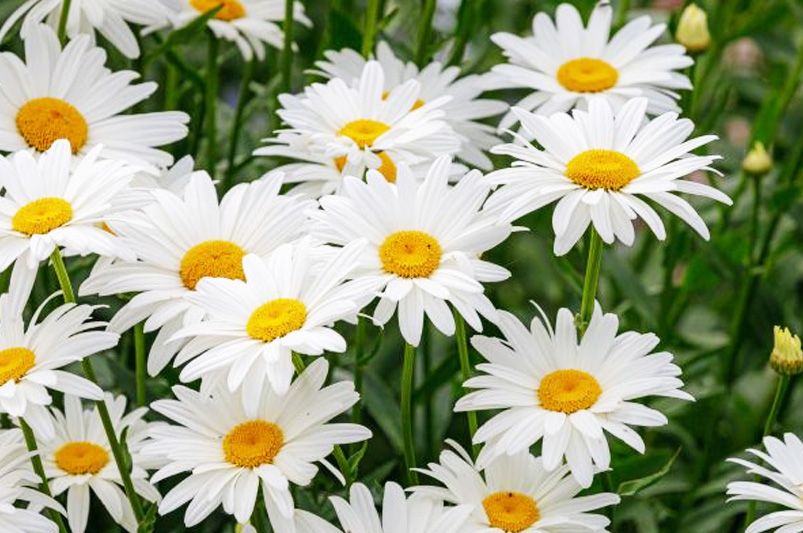
Whoops-a-Daisy Shasta Daisy
From early to midsummer, "Whoops-a-Daisy" produces an unusually dense, spherical, ball-shaped mound of dark green leaves that is entirely covered in huge, 3–4-inch white flowers with gold centres. Compared to "Snowcap," it has a more uniform habit, superior flower coverage, and individual flowers that appear bigger and fluffier.
Try growing this adorable perennial near the front of the border in containers or in the landscape where it will shine brightly. All-time favourites for the perennial border are Shasta Daisies. No garden should be complete without them because they blend in so well with other perennials!
Are You Ready to Cultivate Some Daisy Joy in Your Garden?
In the vibrant tapestry of nature's garden, daisies stand out as the cheerful ambassadors of simplicity and joy. Whether adorning a meadow, gracing a garden bed, or brightening up a vase indoors, these delightful flowers captivate with their timeless charm and effortless elegance.
From the classic English daisy to the exuberant Shasta daisies, each variety brings its unique allure, painting landscapes with hues of white, yellow, and blue. With their low-maintenance nature and resilience in various conditions, daisies invite both seasoned gardeners and novice enthusiasts to cultivate their slice of floral paradise.
As you embark on your journey to nurture these delightful blooms, remember the simple pleasures they offer: the warmth of sunlight on their petals, the gentle sway in the breeze, and the endless smiles they inspire. So let the daisies bloom, and may they continue to spread their contagious optimism wherever they go.
Ready to infuse your surroundings with the beauty of daisies? Start your gardening adventure today and watch as these charming flowers transform your outdoor space into a haven of joy and tranquillity. For expert guidance and assistance in creating your dream garden, consult professional landscapers at ShrubHub – your partner in crafting the perfect botanical paradise.


